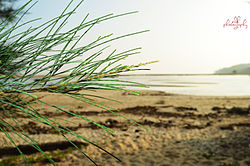Mattool
|
Matool Mattool മാട്ടൂൽ |
|
|---|---|
| village | |

Mattool Estuary
|
|
| Coordinates: 11°57′29″N 75°17′39″E / 11.957955°N 75.294159°ECoordinates: 11°57′29″N 75°17′39″E / 11.957955°N 75.294159°E | |
| Country |
|
| State | Kerala |
| District | Hindi: कण्णूर ) |
| Population (2011) | |
| • Total | 26,086 |
| Languages | |
| • Official | Malayalam, English |
| Time zone | IST (UTC+5:30) |
| Telephone code | 0497284**** |
| ISO 3166 code | IN-KL |
| Vehicle registration | KL-13 |
| Website | http://mattoolonline.com |
Matool (also Mattul, Malayalam: മാട്ടൂൽ) is a place near Payangadi, several kilometres north of Kannur, in North Kerala, South India. The Valapattanam River meets the Arabian sea at Matool.
Matool is considered as a boating destination with boat services to almost all coastal areas of Kannur district. Houseboats give tourists a beautiful view of the sunset and the sea.
As of 2011[update] India census, Mattool had a population of 26,086 with 12,094 males and 13,992 females.
Matool is the Arabic word (مأطول) meaning "how long" and is the name given by Ibn Battuta when he travelled through the area.
Matool is largely populated by members of the Muslim community. Mattool boasts of 98% literacy. A good percent of them are well educated and are well placed in the government and private sector. Mattool has many firsts to its credit including the first Malayalam Qur'an translator. One-third of the population of Matool depends on agriculture and fishing, the major produces being coconut, watermelon, cashew and mango.
As ecosystems, this is one of the estuaries that is under threat from human activities such as pollution and overfishing. This is also threatened by sewage, coastal settlement, land clearance and much more. Estuaries are affected by events far upstream, and concentrate materials such as pollutants and sediments. Land run-off and industrial, agricultural, and domestic waste enter rivers and are discharged into estuaries. Contaminants can be introduced which do not disintegrate rapidly in the marine environment, such as plastics, pesticides, furans, dioxins, phenols and heavy metals. Such toxins can accumulate in the tissues of many species of aquatic life. Industrial pollutants, such as phenols and heavy metals, can devastate fish stocks and damage the estuary soil. Estuaries tend to be naturally eutrophic because land run off discharges nutrients into estuaries. With human activities, land run-off also now includes the many chemicals used as fertilizers in agriculture as well as waste from and humans. Excess oxygen depleting chemicals in the water can lead to hypoxia and the creation of dead zones. It can result in reductions in water quality, fish, and other animal populations.
...
Wikipedia
